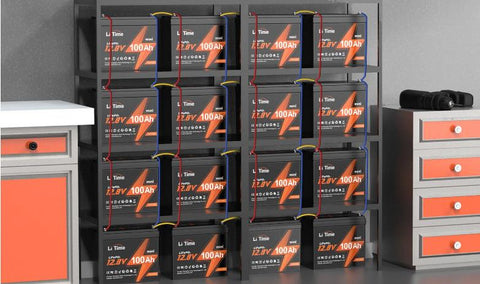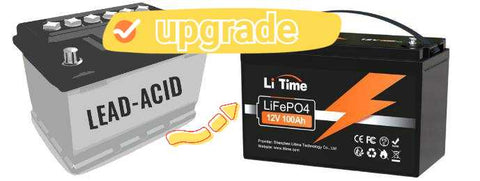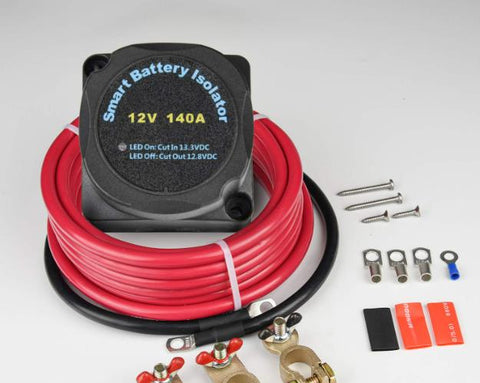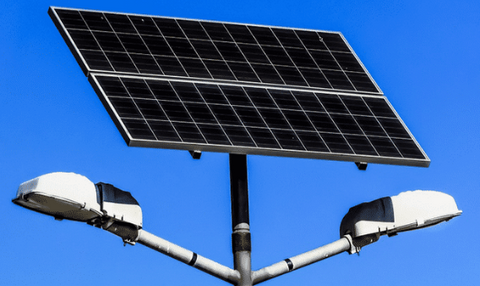As an RV owner or off-grid enthusiast, you rely on your battery bank to power all of your appliances and devices while on the road. However, with energy demands increasing and new gadgets being added, it may be necessary to expand your battery bank to meet your needs. Fortunately, there are several tips and techniques you can use to expand your battery bank that's already in use.
Tip 1: Assessing Your Energy Needs
Before expanding your battery bank, it's essential to assess your current energy needs. This includes calculating how much power is required to run all of your appliances and devices, including lighting, refrigeration, air conditioning, and entertainment systems. Once you have determined your energy requirements, you'll be better equipped to determine how much additional power you need to add to your battery bank.
Tip 2: Adding More Batteries
One of the simplest ways to expand your battery bank is to add more batteries. If you have enough space, consider adding one or more batteries to your existing bank. Expanding the capacity of your battery bank is possible by adding more batteries to a parallel circuit. With a parallel circuit, the positive and negative connections of each battery are combined, which increases the current (measured in amp hours) while keeping the voltage steady. Learn more about battery series and parallel connection in our recent blog. This allows you to increase your energy capacity without sacrificing overall performance or power output. By doing so, you increase your overall battery capacity and give yourself more power to work with.

Condition 1: Expanding a Lead Acid Deep Cycle Battery Bank
Adding to a lead-acid battery bank, whether flooded or sealed/AGM, should be done within about six months of starting regular use. This is because flooded lead-acid batteries degrade quickly compared to other deep cycle batteries, and the window for expanding your battery bank before it reaches full capacity is short.
If you need more storage and you've already exceeded six months of use, replacing your lead-acid batteries with lithium solar batteries is a great solution. Lithium batteries offer double the capacity (or more) of lead-acid batteries, meaning you can fit a brand new and much bigger battery bank on the same shelf or in the same enclosure as the old one.
Condition 2: Expanding a Lithium iron Phosphate Deep Cycle Battery Bank
Expanding a bank of lithium iron phosphate (LiFePO4) batteries is more flexible than expanding a lead-acid battery bank. Lithium batteries last longer and degrade much more slowly than lead-acid batteries, so their "almost like new" stage lasts longer. However, how long this stage lasts varies between manufacturers, and some may give recommendations if you contact them directly.
Another advantage of lithium iron phosphate (LiFePO4) batteries is that each battery has a BMS (battery management system) for managing charging and string balancing, making it simpler to sync all batteries in a string or bank. However, it's important to follow some tips and guidelines to ensure that you expand your battery bank safely and effectively.
1: Act Quickly and Purchase from the Same Manufacturer
If you want to expand your battery bank that's already in use, it's important to act quickly. The closer in age and condition the new and used batteries are, the better. Therefore, you should purchase new batteries as soon as possible after buying your original ones. It's essential to buy new batteries that are as similar as possible to your existing ones. LiTime recommends adding new batteries to your battery bank that are purchased within three months of your original battery purchase. This ensures that your new batteries will have a similar charge cycle life as your current batteries and integrate seamlessly with your existing system.
2: Don't Mix and Match Different Batteries
It's important never to mix and match batteries from different manufacturers or batteries with different model numbers, amp-hour capacities, BMS, or voltages in the same bank. Doing so can cause imbalances and reduce the overall performance of your battery bank. Different batteries may discharge at different rates, leading to premature battery failure and damage to your appliances or devices. Ensure that all batteries added to your system are of the same generation and have the same specifications as your existing batteries.
3: Check Your Charging Source
Before adding new batteries to your system, be sure that your charging source (solar panels, wind turbine, etc.) is powerful enough to handle the increased demand. Adding additional batteries to your system will require more power to charge them fully. You may need to add additional solar panels, wind turbines, or other sources of renewable energy to ensure that your battery bank is receiving enough charge to sustain its new capacity.
Tip 3: Upgrading to Higher Capacity Batteries
If you're looking to maximize your battery capacity without taking up additional space, upgrading to higher capacity batteries may be the solution. Lithium-ion and LiFePO4 batteries are two popular options due to their ability to store more energy in a smaller space.

Lithium-ion batteries are lighter and smaller than lead-acid batteries, making them ideal for laptop, smart phone, electric bicycles , hybrid and plug-in electric vehicles, portable backup power supplies and so on where space is at a premium. They also have a longer lifespan and can handle a higher number of charge cycles than lead-acid batteries.
LiFePO4 batteries are another popular option fo RV, marine applications, off-grid life due to their superior safety features and long lifespan. They can last up to ten times longer than lead-acid batteries and can discharge down to 20% without significantly reducing their capacity.
When upgrading to higher capacity batteries, ensure that they match the voltage of your existing battery bank. Consult with an expert in the field for recommendations on the specific type of batteries that will work best with your system.
Learn more about the differences between LiFePO4 & Li-ion battery.
Tip 4: Installing a Battery Isolator
A battery isolator is an electronic device that allows you to charge multiple batteries simultaneously without overcharging or damaging them. By installing a battery isolator, you can connect additional batteries to your existing battery bank and charge them all at once.

A battery isolator works by separating your batteries into two electrical systems: one for charging and one for use. This prevents the batteries from being overcharged or drained unintentionally.
When selecting a battery isolator, make sure to choose one that matches the voltage of your existing battery bank. You should also consider the maximum amperage rating of the isolator, which indicates the amount of current it can safely manage.
Tip 5: Utilizing Solar Panels
Solar panels can be an excellent way to supplement your existing battery bank. By installing solar panels on your RV roof, you can generate extra power to charge your batteries. This can help extend your battery life and reduce your reliance on external power sources.

When installing solar panels, ensure that they are compatible with your existing battery bank. Consider the wattage and voltage of the solar panels and how much energy they can produce. You may need to install additional solar panels to meet your energy requirements.
Tip 6: Consider a Generator
If you require even more power, a generator may be the solution. A generator can provide backup power when your battery bank isn't enough. Many generator models are designed to work in tandem with your existing battery bank, allowing you to charge and run appliances simultaneously.

When selecting a generator, consider the amount of power it can produce and how long it can run on a single tank of fuel. You should also consider the noise level of the generator, as well as its size and weight.
Maintenance Tips
To ensure that your battery bank is running at peak performance, it's essential to perform regular maintenance. This includes checking the water levels in lead-acid batteries, cleaning the terminals, and equalizing the charges periodically.
It's also important to monitor your battery bank's charge levels regularly. Try not to discharge your batteries below 50% if possible, and always charge them to their full capacity before using them again. You can also learn more about how to maintain LiFePO4 battery.
Conclusion
By investing in an expanded battery bank, you can enjoy greater freedom and flexibility while on the road or off-grid. You'll be able to power all of your appliances and devices without worrying about running out of power. So, whether you're a full-time RV owner or an off-grid enthusiast, consider these tips and techniques to expand your battery bank today.








